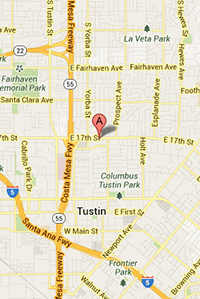Trouble reading street signs?
Print on packages too small to read?
Computer screen uncomfortable?
Blurred vision is very common and in most cases it will be helped with glasses or contact lenses. Sometimes it’s not easy to understand that blurred vision is the reason to why you feel uncomfortable, but when you get help to see things sharply then you realize the impact your vision has for your overall well being.
Causes of Blurred Vision
A refractive error is a problem where light fails to reach the back of the eye (retina). Light must hit the back of the eye for clear vision.
Generally we break up ”refractive errors” into 3 categories. Nearsightedness (myopia), farsightedness (hyperopia), and astigmatism.
- Nearsightedness means that light has fallen short of the retina so you can see things that are near, but the far is blurred.
- Farsightedness is the opposite. Light focuses behind the retina so that distant objects appear sharper than close ones.
- Astigmatism is a shape property and refers to an eye that is oblique in shape.
There’s also a fourth very common vision problem: presbyopia. When people are about 40 years old, they start having problems with focusing their vision up close. They lose their “zoom” ability. This happens when the natural lens inside the eye begins to lose it’s ability to flex and focus up close.
People can have any one or more of these conditions affecting their vision simultaneously.
Eye Motor Deficiencies: Teaming, Focusing and Muscle Deficiencies
Clear vision is not the only important factor for comfortable vision. Equally important is when your eyes efficiently work together. This includes proper eye alignment and the ability to move the eyes smoothly together in all directions. Additionally, the tiny muscles located inside the eye must efficiently control our ”zoom” ability or near focus. When these systems are not performing optimally, symptoms arise such as fatigue from reading, blurred vision, headaches, and discomfort in the eyes (asthenopia). A variety of methods are used to help correct these vision-related issues. These include the standard methods of glasses or contact lenses but may also include Neurolens, prisms or over/under correcting lenses. Prisms can be prescribed in glasses that bend light and allow for comfortable vision when your eyes are not aligned normally. Over or under- correcting lenses serve to relieve or stimulate accommodation (focusing).
Amblyopia (Lazy Eye)
Amblyopia is when a child has reduced vision in one or both eyes because something is preventing a clear visual path of light to the retina. Examples of such barriers are congenital cataracts, high prescriptions, or turned or deviated eyes. Vision can be reduced permanently unless there is some intervention done about these barriers prior to a child reaching approximately 8 years of age. Interventions might be glasses or contact lens corrections, vision therapy or surgery.
Photophobia (Light Sensitivity) or Glare Sensitivity
When patients are sensitive to lighting conditions we have a variety of tints that can be used on glasses or lens treatments that can be prescribed. Glare is often an issue while using computer screens, while working in environments such as grocery stores with fluorescent lighting, or for drivers exposed to asphalt and car reflections.


